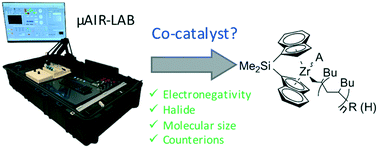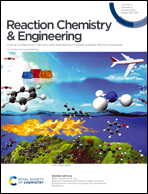Activation of homogenous polyolefin catalysis with a machine-assisted reactor laboratory-in-a-box (μAIR-LAB)
Abstract
Traditionally catalysis research and development has been limited to large purpose-built labs, requiring years of planning and implementation before the first molecules were even examined. However, recent developments in microfluidics, robotics, system miniaturization and machine intelligence allow the decoupling of research from multi-million dollar purpose-built facilities. Additionally this scaling-down of research has significant benefits for the environment, development timelines and researcher workload. In this publication we demonstrate the construction of a microfluidic catalysis research platform contained within a standard hard-sided case measuring just 0.73 m2, consuming under 100 W of power, and generating 66.7 μL of chemical waste per min. The system integrates a purpose-built microreactor with hot-swappable chuck, vacuum enclosure, manifolds, pumps, robotic autosampling, open-source controls and thermographic performance analysis. The system was used to investigate nine chemically different activators for a zirconocene-catalyzed α-olefin polymerization through efficient experimentation and automated transfer learning ML-based data interpretation. The contributions of different chemical structures to catalytic productivity were analyzed. Conclusions made include those regarding co-catalyst chemistry and probable operating conditions. This work demonstrates that a compact flow-based microfluidic platform can screen exothermic catalytic reactions and interpret the results using machine intelligence.

- This article is part of the themed collection: Sustainable Laboratories


 Please wait while we load your content...
Please wait while we load your content...
